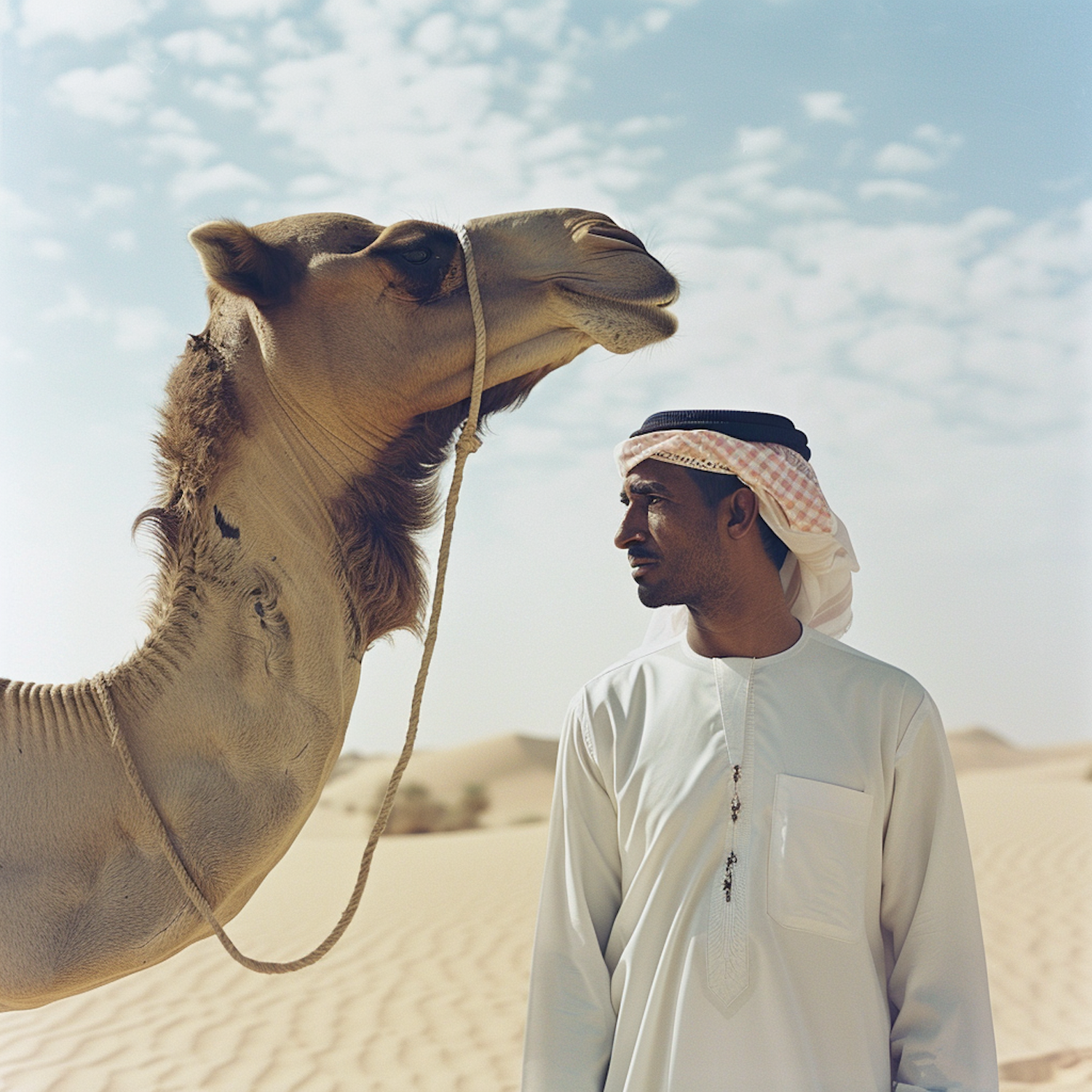
Man and Camel in Desert Landscape
Middle Eastern man in traditional attire with a camel in a desert setting, under a clear blue sky with scattered clouds.
Middle Eastern man in traditional attire with a camel in a desert setting, under a clear blue sky with scattered clouds.
331
Views
121
Downloads
4
Collected